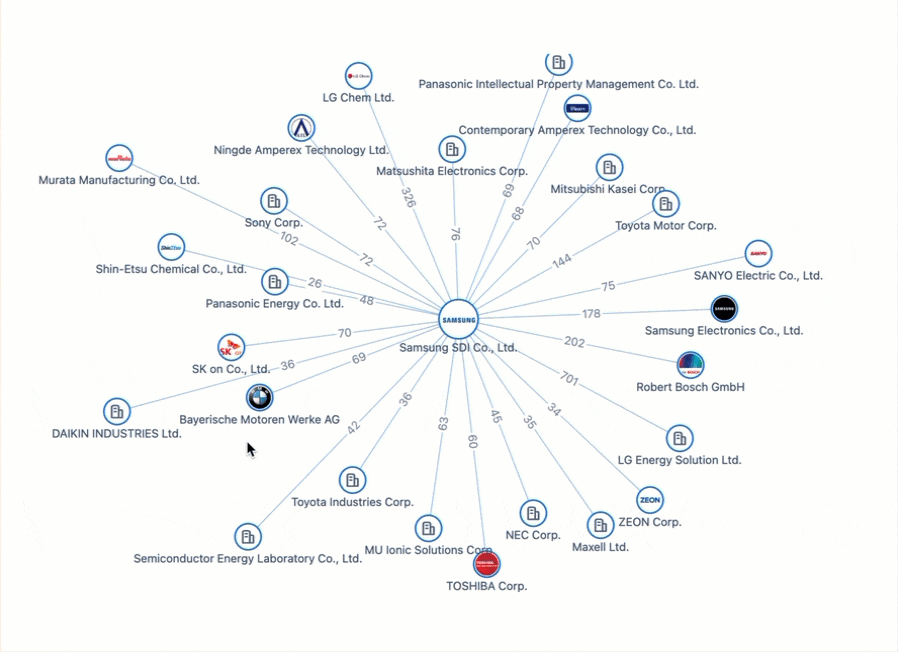Huge R&D & IP Collaboration Barriers: How to Avoid Them
For any new product development project, it’s important for the R&D team and IP team to work together. However, the reality is that collaboration between the two departments can be very difficult as they come from different worlds. R&D are often risk takers but IP teams are usually more risk averse. What I wanted to find out is what the major barriers to R&D and IP team collaboration are – and how they can be avoided.
According to research by Dougherty, patent departments are different organisational entities that have developed different departmental thought worlds. These thought worlds result from diverging goal orientations, departmental structures, routines, cultures, languages and incentive systems which present barriers that hinder collaboration and integration.
Interdepartmental collaboration can be difficult when the departments have different goals and responsibilities. R&D’s main responsibilities involve developing the “next big thing” and solving technical problems, whereas IP teams evaluate inventions to protect and manage the intellectual property rights associated with them. Although it may seem that these responsibilities diverge, they are interdependent and therefore R&D and IP teams must collaborate.
Researchers conducted case studies and interviews on five R&D and patent intensive companies in Germany. They found four major barriers to collaboration:
- Firstly, R&D and patent professionals differ in their goal orientation; R&D have technical orientation which means they have a focus on finding a strong technical solution, whereas patent departments have legal orientation, a focus on achieving the best legal position.
- R&D has a flexible and informal process whereas the patent department is more bureaucratic, hierarchical and formal.
- The language between the departments differs; engineers and scientists use technical language, whereas patent departments use legal language.
- And finally, both departments are usually physically separated from each other which reduces communication and ultimately affects collaboration.
Aligning the goals of each team
The differing nature of R&D and IP teams is reflected in their goals and responsibilities. For this reason, it may be challenging to collaborate, but it’s important to remember that their goals are ultimately to support a business as a whole. According to Conley et al 2013, the patent function plays a vital role, and organisations need to carefully manage its integration with R&D. The integration of the R&D functions channels critical technological, strategic, and legal information into the new product development process and therefore improves the likelihood of new product success. By using each other’s complementary skills, R&D and IP teams can work together on projects to help accelerate new product development.
Furthermore, research by Granstrand reveals that early integration of the patent department into the new product development process leads to filing conceptually broader patents with more claims and improves the firms competitive position on the market. The integrated approach leads to a more effective patent portfolio and protects the firm better.
By understanding how each department’s role is complementary to the other and how it supports an organisation’s overall goal, it can help teams collaborate at the different stages of R&D.
For example, research by Ernst 2003 suggests that the patent department can conduct intelligence services for R&D about competitors, strategies, and interesting technological opportunities by analysing white spaces. This can help R&D to identify upcoming technologies, understand competitors’ strategies and prioritise their development activities which can lead to more effective use of R&D resources.
Different proccesses
As mentioned earlier, R&D and IP teams have different processes. R&D teams are often more flexible and informal whereas IP teams have a formal and bureaucratic process. Mckinsey suggest that without a more standardised process, the innumerable variations in operating models in different parts of the business can hamper collaboration between teams. This constrains innovation and inhibits the sharing of information and skills.
Having different processes can lead to interdepartmental conflict and reduce collaboration. If R&D teams see IP as bureaucratic and rigid, they are likely to avoid interacting with them. If IP teams see R&D as chaotic and risky, they may be more fearful and try to control their projects. This results in more transactional interactions, rather than the integrated, collaborative approach which delivers the best results.
How can this tension be resolved? It can help to standardise processes so that both teams are working within the same overall framework. But many elements of process may be unique to one department or the other. That’s why both teams need to have an understanding of how the other team works and why they work that way so that they can get what they need from each other in a productive way.
Too much jargon
Challenges in collaboration can arise due to the different jargon used by each department. Legal jargon and technical jargon can limit communication between R&D and legal teams because they may not fully understand what the other team member is trying to communicate. This leads to inefficiencies and confusion.
According to research by Patako, uses of jargon can make employees feel irritated and left out, hence they end up misunderstanding whatever has been communicated to them which can affect individual productivity as well as the organisation’s.
Furthermore, according to a study by Franklin Pierce Law Centre, 75% of patent attorneys do not have a technical background, and of the ones that do, 33% of them have almost no practical engineering experience. So, when engineers are speaking to patent experts in technical jargon, they may not necessarily understand the technical jargon which could cause miscommunication.
Because it’s not always possible to find team members who are fluent in both legal and technical languages, fostering a working environment where team members feel free to speak up and ask for clarification on the points they don’t understand is essential.
Using plain language wherever possible when discussing projects will help achieve clear communication between the teams. On larger scale projects, it may even make sense to have a nominated person on each team who is responsible for helping to break down and translate the technicalities, and facilitate cross-departmental communications.
Physical separation
Often R&D teams struggle to collaborate with the legal department because they are physically separated in different offices or even countries. Harvard Business Review discussed that working at a distance can be complicated because it affects the way teams think. It can promote ‘us and them’ thinking and can lead to grouping colleagues into categories rather than seeing them as individuals.
Distance can also add latency into the R&D processes as teams wait to receives legal opinions on inventions and technical advancements when teams are in different locations. This can slow down the product development process, as it may take many emails to communicate ideas which can be immediately conveyed in a short face to face conversation.
Having regular meetings at each stage of the R&D process could help break down this barrier to collaboration by ensuring that everything is communicated effectively and problems are discussed openly.
R&D and IP teams must work together at each stage of development, whether it’s by having regular meetings, communicating via one shared channel or having a department member that sits in both teams, for example a patent engineer who has legal and technical knowledge. Technology can also help to reduce the sense of physical separation, for example through screen sharing, Skype chats, or using other collaborative online tools.
Your recommended content
-

Patsnap Surpasses US$100 Million in Annual Recurring Revenue
Category: Article | Category: News/PR
Wednesday, June 12, 2024
Patsnap has reached a significant milestone of achieving $100M in Annual Recurring Revenue (ARR), marking an impressive 20% year-over-year growth in 2023. This milestone highlights the massive and meaningful value our platform brings to over 12,000 IP and R&D teams across 50 countries, driving efficiency, productivity, and collaboration.
-

Introducing Hiro, an AI assistant built for IP and R&D workflows
Category: AI advancements | Category: AI development | Category: AI-tools | Category: Article | Category: artificial intelligence
Tuesday, May 14, 2024
Powered by Patsnap’s industry-specific LLM, Hiro is designed to streamline IP and R&D workflows from ideation to product launch. With its robust AI capabilities, Hiro brings a new level of efficiency, precision, and security to tasks that were once time-consuming and labor-intensive.What sets Hiro apart is that it draws from our large language model that’s been trained on market-leading patent records, academic papers, and proprietary innovation data. This ensures we deliver more accurate and reliable results for every prompt.
-

Powering the Future of Electric Vehicles: The Battle for Battery Innovation and Patents
Category: Article | Category: battery technology | Category: electric vehicle | Category: EV | Category: lithium ion | Category: lithium ion battery | Category: NEV | Category: new energy vehicles
Monday, April 22, 2024
In the ever-evolving landscape of innovation, the electric vehicle (EV) industry stands as a beacon of technological transformation. As we explore the patents propelling the EV revolution, Apple's venture serves as a poignant example of the challenges even industry giants face in this competitive arena. Join us on a journey through the global patent landscape, where the quest for superior power solutions unfolds, and where the true pioneers of the EV revolution are making their mark.